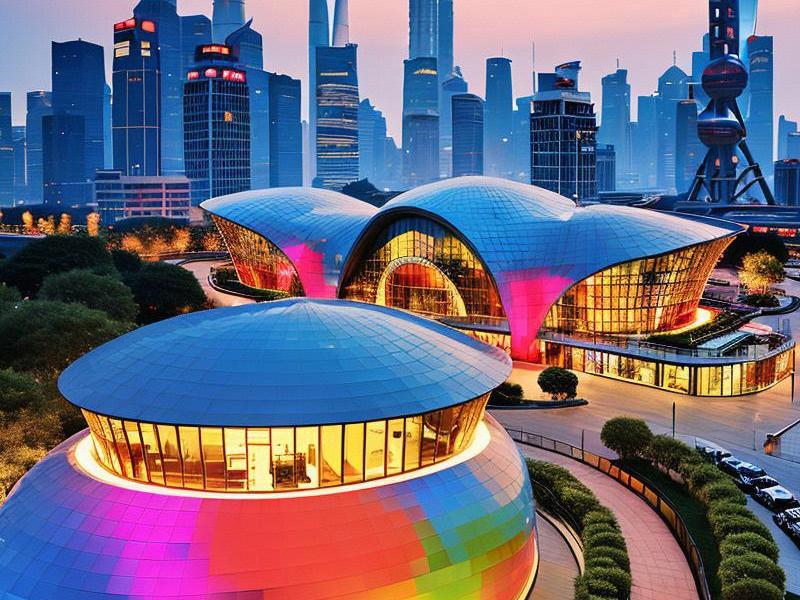Shanghai's Rising Cultural Renaissance: A New Era of Creativity and Innovation
⏱ 2025-05-03 13:25 🔖 上海龙凤419
📢0℃

Shanghai, the bustling metropolis on the banks of the Huangpu River, has long been a symbol of China's rapid economic growth and modernization. However, in recent years, the city has been undergoing a profound cultural transformation, emerging as a beacon of creativity and innovation on the global stage. This cultural renaissance is not just about preserving the past but also about embracing the future, blending tradition with modernity in ways that are uniquely Shanghai.
One of the most striking aspects of Shanghai's cultural renaissance is its thriving art scene. The city has become a magnet for artists, galleries, and cultural institutions from around the world. The Bund, once a symbol of colonial Shanghai, has been revitalized with the opening of the Bund 18, a cluster of contemporary art galleries housed in historic buildings. These galleries showcase a diverse range of artworks, from traditional Chinese paintings to cutting-edge digital installations, reflecting the city's cosmopolitan character.
The Shanghai Museum, located in People's Square, is another testament to the city's cultural revival. Renowned for its extensive collection of Chinese art, the museum has undergone a series of renovations and expansions to accommodate its growing audience. The museum's rotating exhibitions and educational programs attract visitors of all ages, fostering a deeper appreciation for Chinese culture and history.
In addition to its art scene, Shanghai is also home to a burgeoning creative industry. The city's vibrant startup ecosystem has given rise to numerous design firms, advertising agencies, and media companies that are driving innovation in the creative sector. The Shanghai Media Group, for example, has emerged as a leader in digital media, producing high-quality content that resonates with younger audiences.
爱上海论坛 The city's government has played a pivotal role in fostering this creative economy. Through initiatives such as the Shanghai Creative Industries Promotion Plan, the government provides funding, resources, and support to creative businesses. This has created a fertile environment for innovation, enabling Shanghai to compete with global cities like New York, London, and Tokyo in the creative industries.
Urban development projects have also contributed to Shanghai's cultural renaissance. The city's skyline is being transformed with the construction of iconic landmarks such as the Shanghai Tower, the tallest building in China and the second-tallest in the world. These architectural marvels not only symbolize Shanghai's economic prowess but also serve as cultural landmarks that attract tourists and locals alike.
The waterfront areas of Pudong and Puxi have been particularly transformed. The Pudong International Airport, with its futuristic design, is a testament to Shanghai's commitment to innovation. The nearby Lujiazui Financial District, home to the Shanghai Tower, Jin Mao Tower, and the Oriental Pearl Tower, has become a symbol of the city's modernity and ambition.
Cultural festivals and events further enhance Shanghai's reputation as a cultural hub. The Shanghai International Film Festival, one of the oldest and most prestigious film festivals in Asia, attracts filmmakers, actors, and film enthusiasts from around the world. The Shanghai Fashion Week, held twice a year, showcases the latest trends in fashion and design, drawing attention from the global fashion industry.
上海贵族宝贝sh1314
The city's culinary scene is also undergoing a renaissance. Traditional Shanghainese cuisine, known for its delicate flavors and intricate preparation, is being revitalized with the emergence of new restaurants and food festivals. At the same time, Shanghai is embracing international cuisines, offering a diverse range of dining options that cater to the tastes of its cosmopolitan population.
Education plays a crucial role in Shanghai's cultural renaissance. The city is home to some of the best universities and research institutions in China, including Fudan University, Tongji University, and the Shanghai Jiao Tong University. These institutions are fostering a culture of innovation and critical thinking, producing graduates who are equipped to contribute to the city's creative economy.
The cultural renaissance in Shanghai is not without its challenges. The rapid pace of urbanization has led to concerns about the preservation of historical sites and the displacement of local communities. Balancing economic development with cultural heritage is a delicate task that requires careful planning and collaboration between government agencies, private stakeholders, and local residents.
上海娱乐联盟 Despite these challenges, Shanghai's cultural renaissance is a testament to the city's resilience and adaptability. It reflects the dynamic spirit of a city that is constantly evolving, embracing change while honoring its rich history. The cultural transformation of Shanghai is not just about creating a more vibrant and livable city but also about positioning itself as a global leader in culture, creativity, and innovation.
As Shanghai continues on this path, it is likely to inspire other cities around the world to embrace their own cultural renaissances. The lessons learned from Shanghai's journey can serve as a model for other urban centers seeking to balance economic growth with cultural preservation and innovation.
In conclusion, Shanghai's cultural renaissance is a multifaceted phenomenon that encompasses art, creativity, urban development, and education. It is a story of transformation and renewal, showcasing the city's ability to adapt to the changing times while preserving its unique identity. As Shanghai continues to evolve, it is poised to become a global hub for culture, creativity, and innovation, leaving an indelible mark on the world stage.
Shanghai's Enchanting Nightlife: A Symphony of Lights and Culture【特别报道】2025上海港:智能集装箱背后的全球航运革命【时空折叠】——上海的城市更新辩证法Shanghai’s Gilded Lounges: Where Dynasty Elegance Meets AI-Driven Extravagance"Shanghai 2025: Where Ancient Canals Meet Quantum Computing - The Reinvention of China's Global Gateway"Shanghai 2025: The Making of a Next-Generation Global Financial CapitalNeon Renaissance: How Shanghai's Elite Entertainment Clubs Are Redefining Chinese Nightlife CultureThe Yangtze Renaissance: How Shanghai and Its Satellite Cities Are Redefining Urbanization【都市女性志】上海"她力量"图鉴:从石库门女孩到国际都会新女性【轨道上的城市诗学】电车钢轨里的上海百年:从"叮当车"到数字轨交的文明切片

